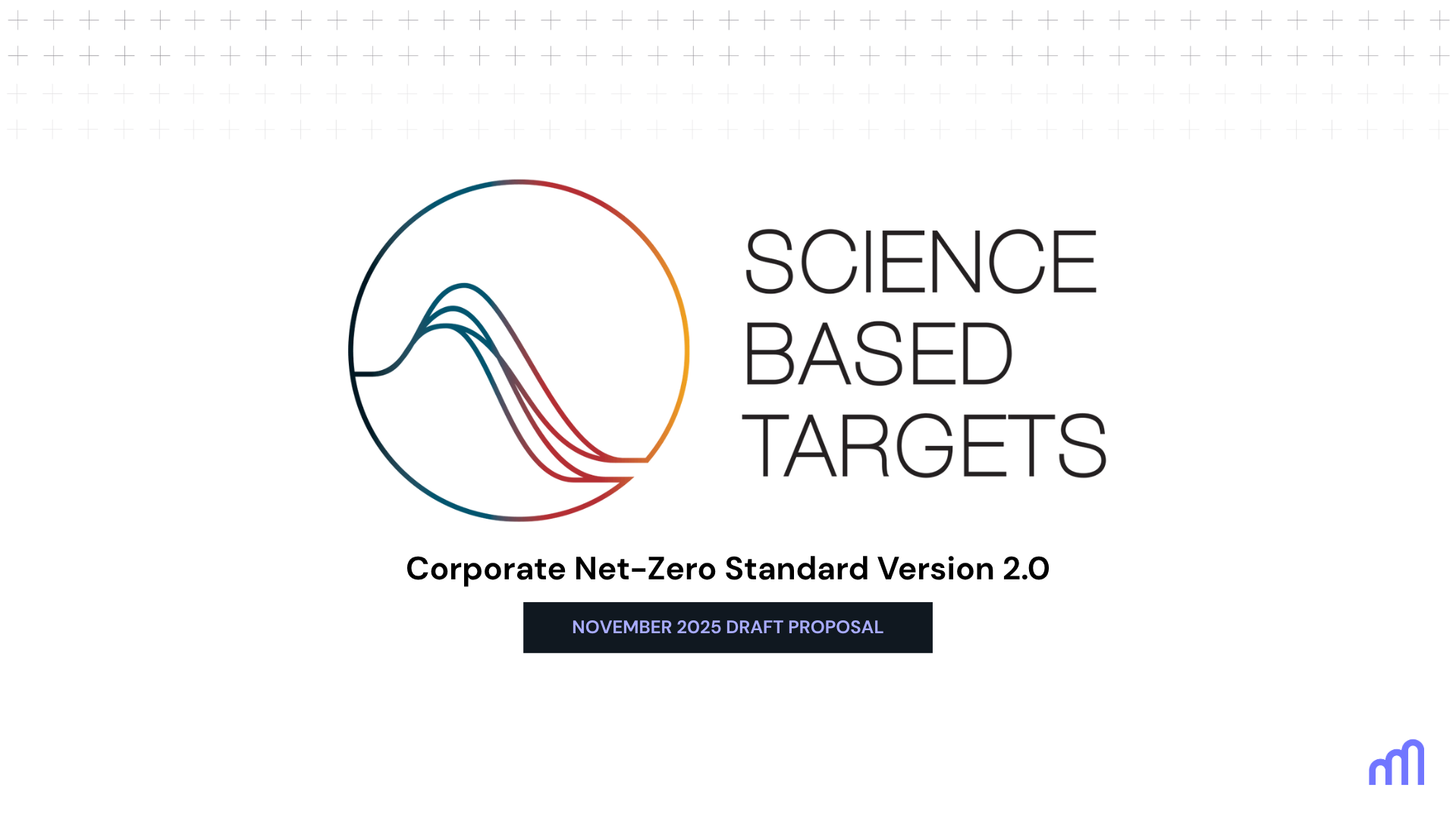

The Science Based Targets initiative (SBTi) has released its second consultation draft of the Corporate Net-Zero Standard Version 2.0. For sustainability managers, this new draft represents a major step forward — moving from high-level ideas to a detailed, auditable framework.
Here’s what’s changed since the first consultation draft in March 2025, and what food companies need to know to prepare.
The March draft outlined concepts; the November draft provides a rulebook. SBTi has added five technical annexes covering metrics, reporting, formulas, claims, and integrity principles. It no longer reads like a policy vision — it’s now a structured standard with measurable requirements.
For food businesses, this brings welcome clarity but also new expectations: consistent reporting, proof of progress, and stronger data governance.
SBTi is replacing its one-time validation model with a cyclical process that drives continuous improvement:
.png)
After Initial Validation, both categories enter a renewal cycle roughly every five years, or sooner if the company undergoes a major structural change such as a merger or acquisition.
This means validation is no longer a box to tick once; it’s an ongoing accountability loop.
Earlier drafts kept the familiar “absolute contraction” model for cutting direct (Scope 1) emissions. The November update replaces that with three practical approaches:
For food manufacturers with processing plants, refrigeration, or logistics assets, the ADP is particularly relevant. It connects emissions reductions directly to capital planning and equipment upgrades — a much more realistic way to stay science-based while managing infrastructure lifecycles.
The draft released in March required both location- and market-based targets. This latest draft expands to a full framework where electricity purchases (Scope 2) now come with stricter integrity rules:
For food companies, this means that generic renewable-energy certificates (RECs) will no longer be enough. You’ll need to demonstrate traceable, region-specific clean power procurement.
The old rule — covering 67 % of total Scope 3 emissions — is gone. Now, companies must target all categories that represent at least 5 % of their total Scope 3 footprint. For the food industry, that usually means agriculture, packaging, refrigeration, logistics, and product use.
The November draft defines three approved methods:
This flexibility allows companies to choose the approach that best fits their influence — from direct operational control to supplier engagement.
.png)
March 2025’s vague “book-and-claim” idea is now formalized through verified EACs — digital records that prove a specific environmental benefit has occurred, such as producing renewable energy or manufacturing a low-carbon material.
SBTi introduces two structured mechanisms for using EACs:
To ensure integrity, EACs must:
In simple terms, EACs act like receipts proving that a credible low-carbon action happened somewhere in your value chain. They give food companies a way to support and claim emissions improvements where direct traceability isn’t yet possible — for example, in upstream farming or materials production — without double counting or greenwashing.
The SBTi has replaced the old concept of Beyond Value Chain Mitigation (BVCM) with a new, more structured framework: Ongoing Emissions Responsibility.
“Ongoing emissions” are the greenhouse gases a company still emits each year as it works toward net-zero. These are the residual emissions that remain before a company reaches its long-term goal — such as:
The previous BVCM approach encouraged companies to fund climate projects beyond their value chain — like reforestation or carbon removal — but it was voluntary and loosely defined. Companies could claim “leadership” for these actions, but there were no common rules on quality, timing, or recognition.
The November 2025 draft changes that by introducing a clear, measurable system that connects ongoing emissions directly to responsibility. The Ongoing Emissions Responsibility framework introduces a two-tier recognition system:
All actions must follow SBTi integrity principles, be verified by a third party, and be publicly disclosed. Starting in 2035, Category A companies will need to progressively assume responsibility for a growing share of their ongoing emissions.
This new framework helps companies acknowledge and act on those remaining impacts, not by offsetting them casually, but by:
For food companies, this means moving from ad-hoc offsetting to structured, accountable climate-finance contributions that directly support global decarbonization.
One of the biggest changes between the March and November drafts is that SBTi moved from guidance to governance. The March 2025 draft outlined principles for monitoring and reporting, but left most of the “how” undefined.
The November 2025 draft turns those principles into enforceable requirements that determine how companies prove progress, get re-validated, and talk about their achievements publicly.
For sustainability managers, this means the SBTi process becomes much more like an audited quality-management system — measurable, repeatable, and verifiable.
Additional transition guidance will be issued alongside the final standard in 2026.
The November 2025 draft shifts SBTi from ambition to accountability: targets must be measurable, progress verifiable, and claims standardized. For food companies, that means integrating climate into capex, sourcing, and supplier engagement, not just reporting. Those who start now will build the data, assurance, and partnerships needed to move fastest—and be most credible—when V2.0 becomes the baseline in 2028.
Want to understand how these changes affect your value chain?
Get in touch with the Carbon Maps team. We help food companies model emissions, engage suppliers, and align with the latest SBTi requirements.